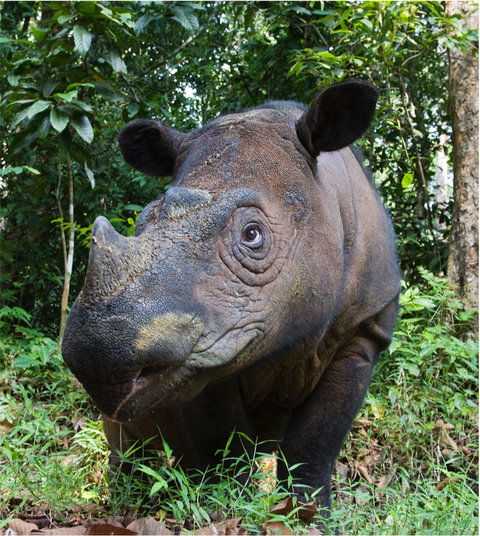
Rhinohornsaremadeofkeratin,the samematerialfoundinyourhairand fingernails.
RhinosResearch
TheworkofonescientistattheCincinnatiZooshowedpromise.TerriRothandherteamdevelopedwaysofhandlingtherhinosthatmadetheirworkmoresuccessful.In2001,acaptiverhinonamedEmigavebirthtoacalf.TheynamedhimAndalas.HebecamethefirstSumatranrhinobornincaptivityin112years.Nowhelivesin Sumatra.
ThenewestrhinoisnamedPahu.Shewasremovedfromthewildandtransportedtoasanctuaryin Borneo.

EminibblesonleaveswithherbabyattheCincinnatiZoo, U.S.A.
Pahu’sRescue
VeterinariansguidedPahuintoacrate.Thecratewasthenloadedontoatruck.Heavyrainsfilledtheroadswithdebris.So,alocalcompanysentabulldozertocleartheway.Pahuwasgivenapoliceescorttoasafe place.
Atthesanctuaries,eachanimallivesinitsownsectionofrainforest.Pahuwillbegiventimetosettlein tohernewhome.Planscontinuetofindotherrhinosinthewild, too.
Fornow,Pahu’srescuemarksanothermajorstepinrescuingtheSumatranrhino.Theworkisslow,but promising.

Atthesanctuary,eachrhinolivesinitsownsectionof rainforest.
